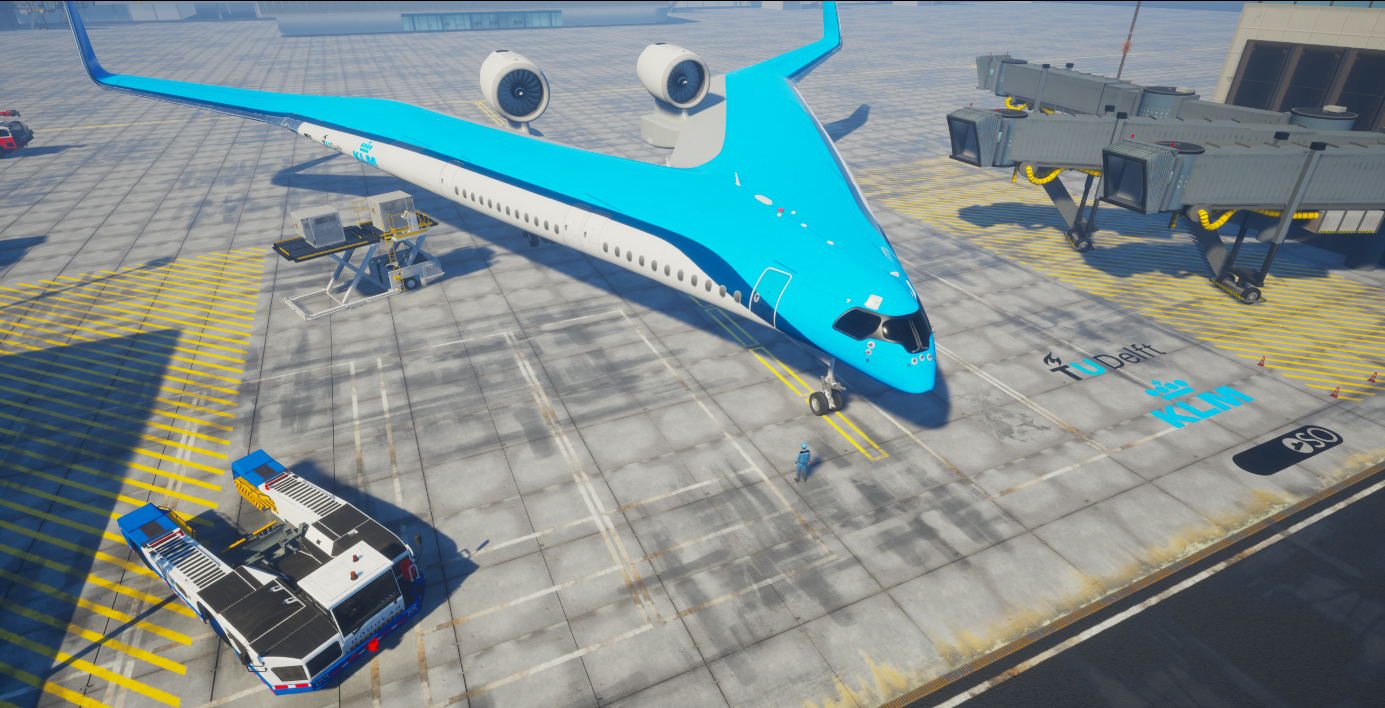A new cooperative agreement has been signed by the two parties to work together on making aviation more sustainable. KLM says it will be contributing towards TU Delft's research into an innovative flight concept known as the "Flying-V", which embraces an entirely different approach to aircraft design, in anticipation and support of sustainable long-distance flight in the future.
The aircraft was originally conceptualised as a potential aircraft design for the future, but can be compared to today's most advanced aircraft, the Airbus A350. Although the plane is not as long as the Airbus widebody, it does have the same wingspan. This will enable the Flying-V to use existing infrastructure at airports, such as gates and runways, without difficulty and the aircraft will also fit into the same hangar as the A350.
KLM and TU Delft highlight that the Flying-V will be capable of carrying the same number of passengers - 314 in the standard configuration - and the same volume of cargo, 160 cubic metres. But, being smaller it will have less aerodynamic resistance.
Looking at the concept, the aircraft's v-shaped design will integrate the passenger cabin, the cargo hold and the fuel tanks in the wings. Its improved aerodynamic shape and reduced weight will mean it uses 20% less fuel than the A350, claim its Dutch promoters. A flying scale model and a full-size section of the interior of the Flying-V are planned to be presented at the KLM Experience Days at Amsterdam Airport Schiphol in Oct-2019 on the occasion of KLM's 100th anniversary.
The prototype will ultimately be used to test whether the Flying-V can remain stable and reliable while being flown at low speeds - during take-off and landing.

KLM and TU Delft believe the Flying-V will provide the opportunity to change long standing cabin configurations, while taking advantage of lightweight resources to maximise the efficiency gain the new aircraft shape will provide. In its present design that perceive it still flying on kerosene, but consider that it could easily be adapted to make use of innovations in the propulsion system - by using electrically-boosted turbofans for example.
KLM has spoken regularly about its aspirations for sustainability within the airline industry and the fact that the privilege of global connectivity that has driven its own growth is paired with a huge responsibility for the planet.
"KLM takes this very seriously," says its president & CEO, Pieter Elbers. "We have been investing in sustainability at different levels for many years to develop a broad spectrum of sustainability initiatives." He says the airline is "proud" of what it describes as a "progressive cooperative relationship" with TU Delft. "This ties in well with KLM's strategy and serves as an important milestone for us on the road to scaling-up sustainable aviation," he adds.